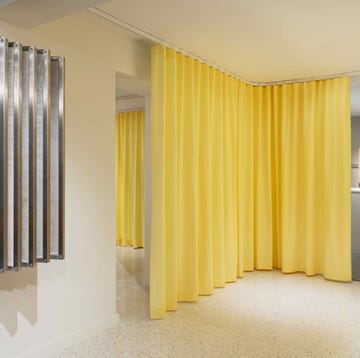Think ‘seersucker’, and what comes to mind? Is it a summer suit, in classic blue-and-white stripes, worn by an American from the deep South? If so, Senator Bill Cassidy of Louisiana will be happy. In 2015, he proclaimed seersucker to be ‘more than a fabric – it’s a symbol of American-made products that create manufacturing, shipping and sales jobs across the country’.
This admirably on-message statement was in response to a Missourian senator’s attempt to ban seersucker suits being worn by anyone over the age of eight ‘because adults look ridiculous in them’. As is frequently the case with politics, definitive answers are best sought elsewhere. Seersucker is not, in fact, American. This distinctive, puckered fabric – usually, but not always cotton, often, but not necessarily, striped – probably originated somewhere in the East Indies, but its precise origins are mysterious.
What's everyone reading?
We do know that it’s created using a technique called ‘slack-tension weaving ’, which essentially means weaving a fabric with one warp at regular tension and another at a looser tension. As the two blend, the looser yarns buckle. The name is a corruption of a Sanskrit phrase ‘shir o shakka’, meaning ‘milk and sugar’. Opinion is divided as to whether this refers to the smooth (milk) and crinkled (sugar) texture, or to the original colourway, which was a stripe of white (milk) and tan (sugar).
The fabric became widespread when it was a staple of the goods traded across the world during the 19th century, especially by the British East India Company. It crops up in 1806, for example, as cargo aboard ships bound for the shores of Trinidad and Barbados with barrels of herring, yellow corn meal and gingham. And 20 years later, a wholesale warehouse in Cheapside, London, was selling it as well as lace veils, French trimmings and Indian and British shawls.
Two centuries later, and seersucker is once again having a moment, both in fashion and interiors. Sean ‘Diddy’ Combs (above) was spotted wearing it for Sean John's 2007 underwear and loungewear launch party while menswear label Thom Browne celebrated the material on its Spring/ Summer 2020 runway (first image).
The reasons for this are partially practical. Seersucker comes into its own in warmer weather because its texture keeps it away from clammy skin and allows air to circulate. It also does not need pressing: an advantage in humid conditions. This is why it was a particularly popular suiting material in the early 20th century in places such as New Orleans. Other reasons for its resurgence are less easily definable.
As a textile it treads the line between chic formality (stripes and crisp cotton) and laidback vibes (summery effect and bubbly finish). It also satisfies an ongoing interiors trend for mixing in and experimenting with unusual textures and natural materials: think bouclé, seagrass and macramé. Senator Cassidy may have slightly fudged the truth regarding this textile’s origins, but he was right to be enthusiastic. Seersucker is about to conquer the world all over again.














